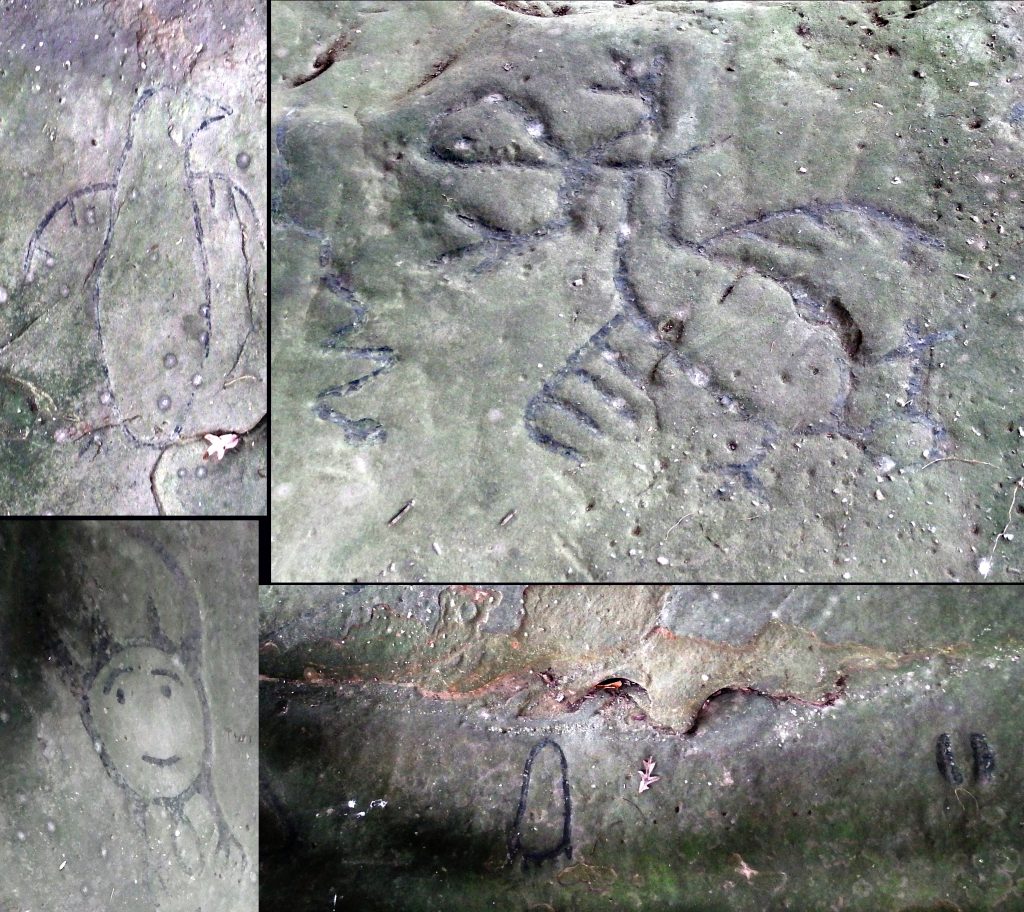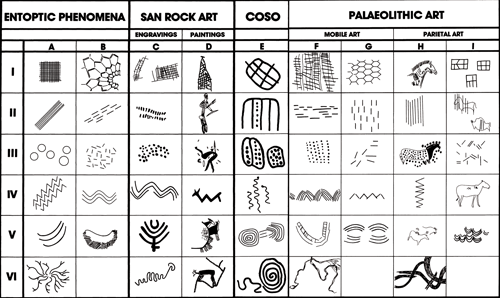I’m only a few chapters into the first draft of my 2019 series, which means the characters, the plot, and even the world are entirely in flux. This is the dreamtime of a novel, when I submerge myself in ideas without requiring any of them to stick.
Here’s what I know:
- My heroine is a modern-day archaeologist.
- There’s some sort of link between the ancient worlds she studies and the werewolves she doesn’t yet know exist just beyond the edges of her ordinary life.
- The art of those ancient worlds might just be the link….
So I’ve been researching French cave paintings, which will likely be the subject of another post. A throwaway line in one of those books, however, sent me off on a tangent. It suggested that prehistoric people painted or etched into rock faces throughout their environment. We just know about the stunning cave paintings because they were created in a protected environment and stood the test of time.

I should have realized that was the case due to my own experience visiting Inscription Rock at the edge of Kelleys Island, Ohio. I was so excited to see a petroglyph up close and personal…then I didn’t even take a single photograph of the engravings. Because, in just a century and a third, lines that had clearly represented people and animals had faded into an impossible to decipher mess.

My recent visit to Leo Petroglyph in the southern part of the state was slightly more inspiring, but still left a lot to the imagination. Lack of wave action and the presence of a shelter erected in a more timely manner (plus modern painting within the lines) made it possible to decipher birds, a snake, bear and deer (elk?) tracks, plus a human/animal combo that looked a lot like a prehistoric emoji. But why had the images been drawn and what did they mean to their creators?
I soon discovered that petroglyphs are found nearly worldwide and they may have widely varying purposes. Some were maps, others are considered the forerunners of writing, and some may have been carved by shamans in an altered state of consciousness.

How can we know that the ancient artists weren’t just representing the world they saw around them? Geometric patterns are often included in paintings and drawings from prehistoric times…and the similarities of those shapes from widely disparate continents is startling.
Scientists had a hard time explaining these repeated grids and dots in ancient art until studies of the images modern people see during drug-induced hallucinations came to light. Form constants are shapes that our brains and eyes team up to produce when left to their own devices, a bit like the “snow” on an old-fashioned TV when nothing is being broadcast across the airwaves. Seeing form constants show up in cave paintings and petroglyphs suggested a shamanic/religious purpose of some of these images at least.
Of course, in my werewolf world, there aren’t many drugs but there’s plenty of magic. Suddenly, the wheels are spinning like crazy in my head….